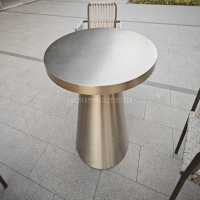Welcome to the website for landscape facilities products and knowledge.
How does the table’s design account for resistance to damage from sand or dirt?
Modern table designs incorporate multiple strategic elements to combat damage from abrasive particles like sand and dirt. The first line of defense lies in material selection. Manufacturers increasingly utilize hardened glass, high-pressure laminates, or polymer composites with non-porous surfaces that prevent particulate matter from embedding into the material. These surfaces lack microscopic pores where sand could accumulate and gradually wear away the finish through repeated friction.
Beyond surface materials, engineering attention focuses on protective barriers. Many contemporary tables feature specialized coatings such as polyurethane layers or powder-coated finishes that create an impermeable shield. These coatings add significant hardness to the surface, making it resistant to the scratching and scuffing that occurs when sand particles are dragged across the table during cleaning or use. The molecular structure of these coatings distributes pressure evenly, preventing concentrated abrasion points.
Joint construction represents another critical design consideration. Sand and dirt particularly threaten tables where moisture can carry particles into seams and connections. Advanced designs incorporate fully sealed edges and gasketed joints that prevent particulate intrusion. Waterproof bonding agents create continuous surfaces without gaps where destructive accumulation could occur. This comprehensive sealing approach extends to underlying support structures, ensuring no vulnerable points exist throughout the entire table assembly.
For outdoor applications, designers implement additional protective measures. These include integrated drainage channels that redirect both water and particulate matter away from critical components. Some designs incorporate slight surface angling that encourages natural runoff of both liquids and solid particles. The hardware itself often receives protective plating or coating to resist the corrosive combination of moisture and abrasive dirt particles.
The integration of these design elements creates tables capable of maintaining their structural integrity and aesthetic appeal even in environments with significant sand or dirt exposure. From commercial outdoor dining spaces to sandy beachfront properties, these engineering solutions ensure longevity despite challenging environmental conditions. The continuous innovation in protective materials and sealing technologies promises even greater resistance to particulate damage in future table designs, expanding their suitable applications across various demanding environments.
Related search:

Recommendation
Outdoor Metal Table - Classic Outdoor Furniture, Stainless Steel Table, Durable and Reliable